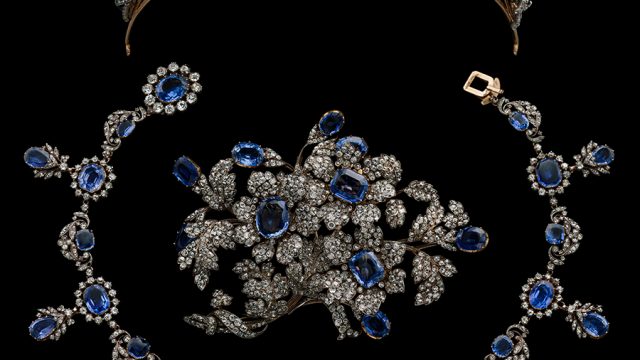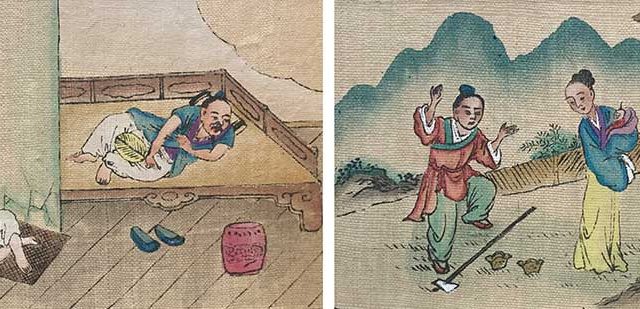This July we were delighted to reveal that Clive Hicks-Jenkins’ imaginative and playful illustrations for Hansel and Gretel: A Nightmare in Eight Scenes had won the V&A Book Illustration Award 2020. This beautifully illustrated book is Clive’s second collaboration with Simon Armitage, Poet Laureate (2019-2029).
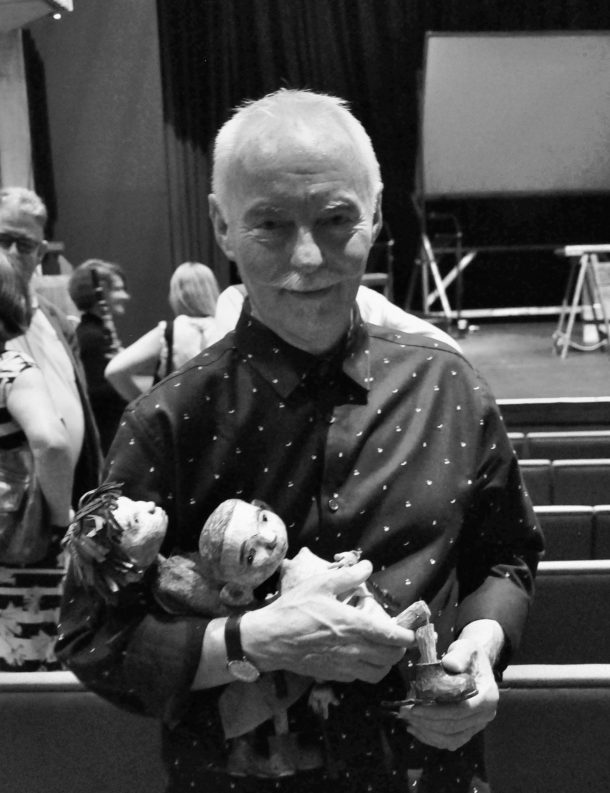
Hansel and Gretel originated as a puppet show designed and directed by the artist, with the lyrical ‘libretto’ written by Armitage. Clive began his career as a choreographer and stage director before turning his hand to painting and illustration. Reimagined as modern-day refugees, his evocative illustrations of Hansel and Gretel were created on layers of paper and lithography film with colour introduced at a later stage.
Due to the COVID-19 pandemic, the V&A Illustration Awards 2020 display has been postponed until summer 2021. In the meantime, we’ve been in contact with Clive to find out more about his illustrations, collaboration and other projects:
Firstly, many congratulations on winning the V&A Book Illustration Award 2020!
Can you tell us more about your illustrations for Hansel and Gretel: A Nightmare in Eight Scenes?
I have no digital skills, so all the drawings were produced old school, mostly in pencil on paper and lithography film. Because the publisher Joe Pearson and I share an affection for 20th century book illustration and colour lithography, we decided to honour the feel of that tradition by generating the illustrations as separations that were then cleaned and digitally assembled by the book’s designer, Laurence Beck. Once in the computer we began the process of experimenting with colour. This worked extremely well because it meant we could try different palettes to discover which best suited the book as a whole. One of those palettes was inspired by the dull pinks, blues, golds and greens of the bus tickets of my childhood, littering the pavement outside our house where they were discarded by alighting passengers. The bus ticket palette was colour-muted though tonally strong, and so would work for the uncoated paper and matt finish Joe and I planned for our book. The misalignments that can be a feature of illustrations created as separations, were effects I actively pursued. I wanted the hand-drawn qualities to be evident on the pages, so Laurence’s digital-clean up was largely to do with removing background tone rather than eliminating any intentional roughness. His sensitivity to retaining the character of the original drawings played a huge part in how the book looked when finished.
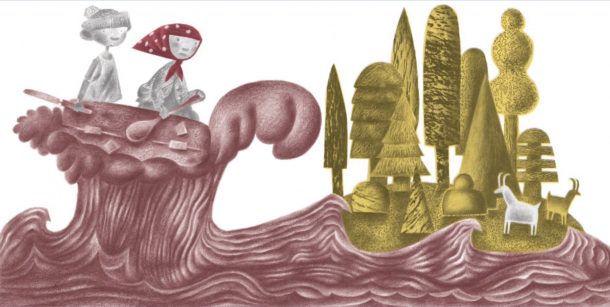
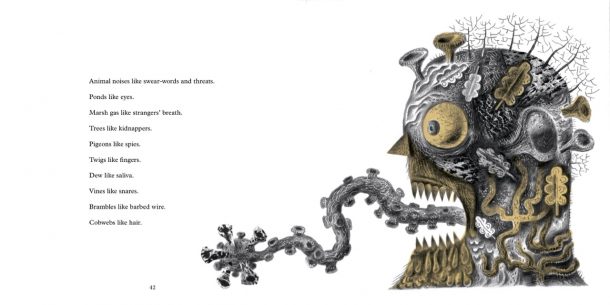
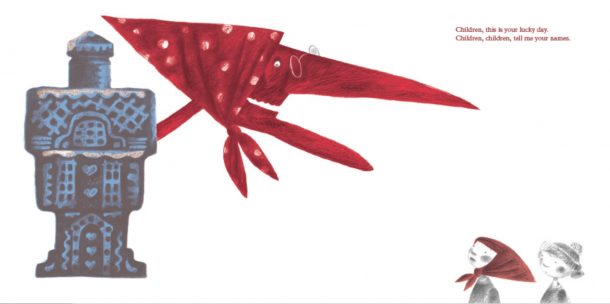
Hansel and Gretel: A Nightmare in Eight Scenes was published by Design for Today, who aim to work with designers and illustrators to create ethically and locally printed limited editions. Can you tell us how this project came about and what it was like to work with them?
Joe Pearson and I had met at a book fair, and had briefly talked about one day collaborating. Simon Armitage had seen and liked my suite of prints made at Penfold Press on the theme of Sir Gawain and the Green Knight, and had suggested I adapt the images to illustrate his revised translation of the poem for Faber & Faber. That was all in progress when in 2017 I was commissioned to design and direct a new music theatre adaptation of the fairy tale Hansel & Gretel. The producer asked for my thoughts on who I’d like as writer, and I suggested Simon, who luckily had a small window of opportunity to complete the libretto before his other commitments took over.
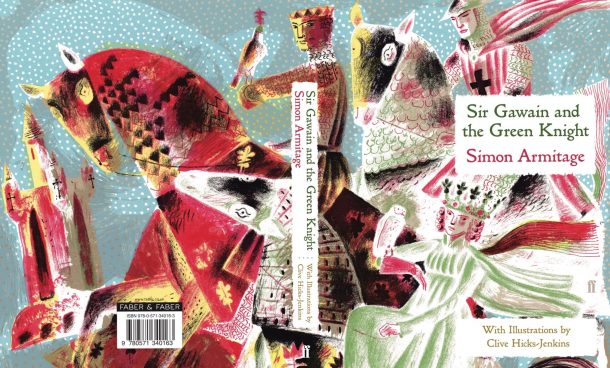
By 2018 the music and text were complete and I was in pre-production for the premiere of Hansel & Gretel: a Nightmare in Eight Scenes at the Cheltenham Music Festival. Simon came up with the idea of publishing the libretto in an illustrated edition, and I suggested we approach Joe. With Design for Today on board, plans for the book began in earnest, and I began my work it as soon as the tour of the stage production had ended.
While I wouldn’t say the book’s illustrations were intended to reproduce the look of the stage designs, there were several crossover elements
Perhaps the most significant were the children. Presented as puppets for the stage, my designs for them translated perfectly into illustrations.
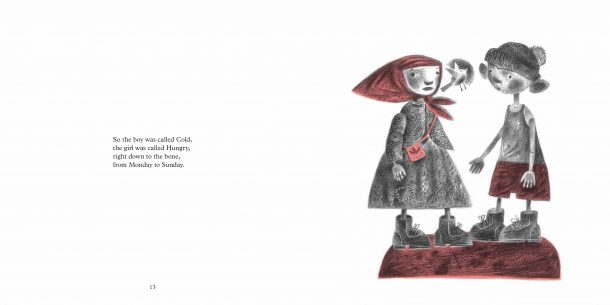
What inspired you to become an illustrator?
I didn’t set out to be one and had quite a circuitous route to it. I’d established myself as an easel artist long before I received my first illustration commission, and before that my early early career had been in the theatre. However I’d always been attracted to 20th century book illustration and had consistently acquired books by illustrators that interested me. Although I’d some experience illustrating books for a private press, my first real brush with trade editions came as a consequence of not liking the way my paintings were too frequently being adapted for book covers by publishing houses, without any input from me. The cropping imposed on images was too often clumsy and the colour reproduction way off. I particularly didn’t appreciate ugly fonts being applied to titles and authors’ names. So when the American author Marly Youmans enquired whether I had an image appropriate for the cover of her novel Val/Orson, I suggested that instead of choosing one from my archive, I make one specifically for the book. Marly and I were in the early stages of a growing friendship, and after Val/Orson had been published, we segued with ease from project to project. I happily clung to her coat-tails, recommended by her to the various publishing houses she became attached to. In that way we’ve continued together for over a decade. To begin with I made just the images for the jackets, but later I hand-lettered the titles and her name, and provided vignettes and decorations for the pages. My most recent for her was a cover and chapter headings for Charis in the World of Wonders, published this year by Ignatius in the US.
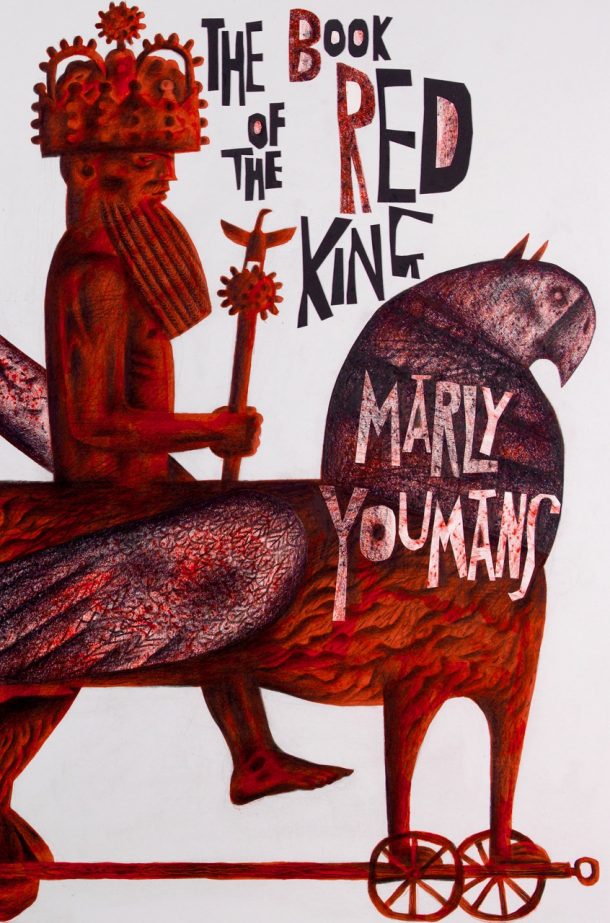
How would you describe your style?
I work as an illustrator the same way as I work as an easel artist. I practice a Modernist’s flatness-of-plane and disregard for academic perspective. I love Outsider Art and Folk Art. I like to retain a sense of excitement when drawing for illustration, balancing any development of the subject with my preference for the rough and approximate. I avoid photographic references, preferring to use found and self-made objects as my models. I love patterning and the play of positive and negative shapes.
I have a bit of a visual eccentricity inasmuch that I see negative shape before I see positive. I see around things, and always have.
Perhaps that was a part of what made me a choreographer in my early career, because I saw dancers as moving outlines cutting through space.
What projects have you been working on over the past year? Has your practice been affected by the COVID-19 pandemic?
I was lucky enough to have two wonderful illustration projects to get me through 2020. Joe Pearson commissioned me to illustrate a small picture book in his ‘Bantam’ series. It’s out this month, tiny in scale and consisting of just sixteen illustrations. The Birdhouse illustrations juxtapose ‘birds’ and ‘houses’, though not in the way a straight reading of the title might suggest. The bird models were drawn from my collection of vintage and folk art toys: carved and painted birds from Poland, mould-made glass birds from Bohemia, early chalk-ware birds from the US and fragile chenille birds from China. The ‘houses’ drew on my collection of toy villages from the Erzgebirge region of Germany, pre-WWII Japanese ‘Putz’ cottages made out of card and glitter for export to the US Christmas markets, and garish, spray painted aquarium decorations of pagodas from China. I used Staffordshire china, my own and some borrowed. Staffordshire has such a lovely child-like quality.
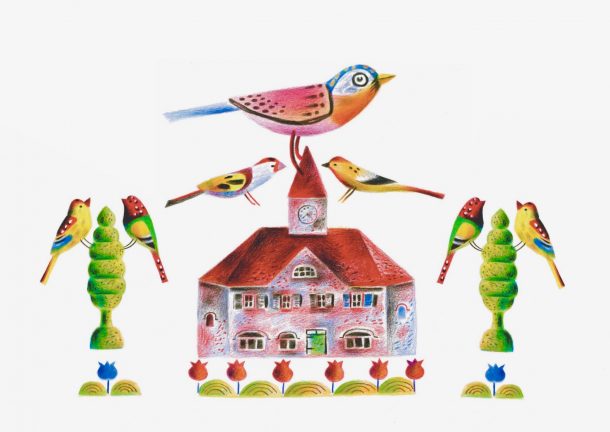
My second project was to make the illustrations for Simon Armitage’s new translation of the medieval poem, The Owl and the Nightingale, due out from Faber & Faber next year. The poem, unlike the chivalric adventure/quest of Sir Gawain and the Green Knight, is a satire in which rival birds shamelessly boast about their own merits, while being unremittingly scornful of each other’s perceived shortcomings. Morals are called into question and barbs are aimed like missiles. The protagonists are as mean-spirited and vain as anything you’d find in Made in Chelsea, which made it a lot of fun to illustrate. Simon suggested I might cast a nod to medieval illuminated manuscripts in my images, which proved a profitable recommendation. Like Marly, Simon is a generous and trusting collaborator. Both are hands-off in approach, leaving me to read and contribute to their texts in the ways I think best serve them. The new book is intended as a companion volume to Gawain, made to the same dimensions and with full-page full-colour illustrations throughout. However this time around we’re adding vignettes and illuminated capitals to the text pages.
How do you overcome creative blocks?
I always plan well ahead and it’s my practice to start project-books on any ideas I feel may have potential. So I’m never casting about for themes when I come to the end of an exhibition or an illustration project. The next idea moves to the front of the queue, and I’m up and off again with barely a pause.
On days when I don’t feel up to the serious work of making images, I research or make models, or open my project-books and develop the ideas in them.
Doodling, essentially, but solid results develop out of work undertaken in this way.
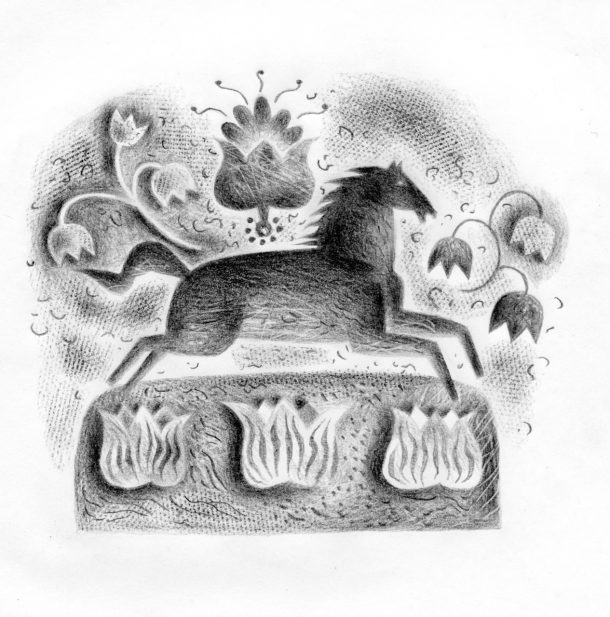
What advice would you give to new and emerging illustrators?
Make time for being playful with ideas. My best work springs from play.
No matter how serious the subject, and no matter how pressurised I may be with deadlines, play is where the treasure lies buried, and it never fails me. The moment I become too earnest in my approach, or too tired or muddled, I stop, take stock, get out the model-making box and start to make things. Card, scissors and glue for collages, models, toy theatres, maquettes and puppets. The things that I make lighten my sprits and lead me safely back to where I need to be. Creativity requires energy in order to move forward, and for me play is the generator fuelling it.
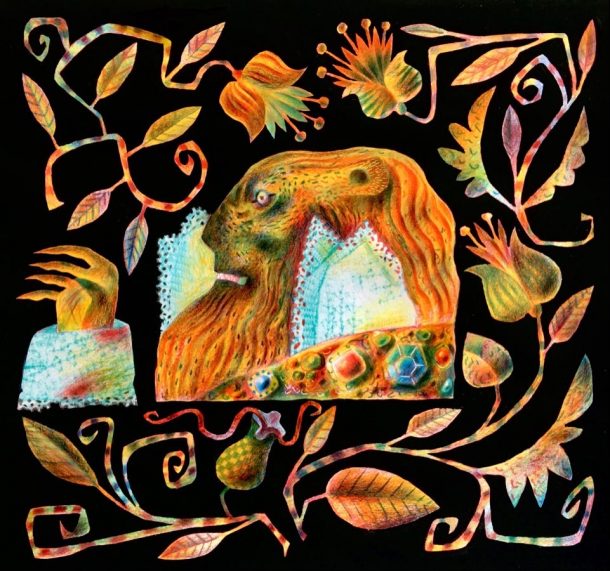
Clive Hicks-Jenkins’ website: http://www.hicks-jenkins.com/
Design for Today: https://www.designfortoday.co.uk/
The V&A Illustration Awards were established in 1972 and have since become the UK’s most prestigious annual illustration competition. Winning and shortlisted illustrations can be found on our website at https://www.vam.ac.uk/info/va-illustration-awards – sign up to our newsletter to receive updates!
The Awards are generously supported by the The Linder Foundation and the Moira Gemmill Memorial fund.

